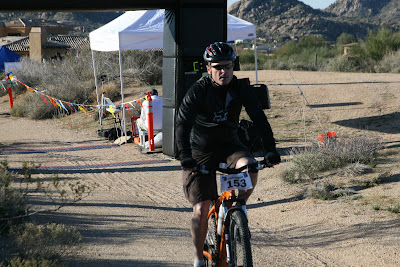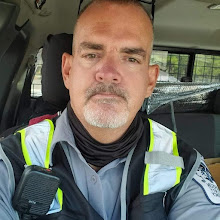The newest business wanting to settle in Camp Verde won't have a storefront, won't manufacture anything and won't offer any services to the public.
It will, nevertheless, be very visible.
Dateland Proving Grounds is the research, development and training division of STARA Technologies, a company that designs and manufactures specialized equipment for the military.
One of those devices is a 70-by-20-foot, helium-filled balloon equipped with a million-dollar camera that gives units in forward positions the ability to see if anyone attempting to attack their position.
There are already 22 of the balloons deployed in Afghanistan, and they have proven to be highly effective eyes in the sky.
On Thursday afternoon, Dateland representative Doug Powell gave residents their first look at what the company is proposing to do.
"We are interested in coming to Camp Verde because it offers us a chance to train soldiers in an environment similar to what they will find in Afghanistan," said Powell. "It is our hope that the community will accept us."
What Powell says the community will have to be accepting of is a balloon about the size of a semi-tractor trailer rig floating about 2,500 feet in the air, 24 hours a day, seven days a week.
Powell used his opportunity on Thursday to address some of the community's concerns, which included possible invasion of privacy safety and how the balloon might affect the town's dark sky policy.
Powell said the company has very stringent rules when it comes to what they observe during training. It is limited to spotting and marking targets on nearby hilltops and following vehicles.
"We don't look in people's homes, backyards or any part of their private lives. And we don't record any of the footage taken with the camera. Training policies are in place and will be followed. Anyone not following those policies would be ushered off the premises," said Powell.
Powell said the balloons have redundant safety systems and can be dropped remotely if one should ever leave its moorings.
During night training, residents of Camp Verde would see only the marker lights of the balloon and a string of lights marking the tether.
On average, the 15-acre site they are proposing to use, on property owned by the Camp Verde Sanitary District off State Route 260, ( MAP ) will host between 15 and 30 personnel.
"Crews sent to Camp Verde for training would be staying at local motels and eating at local restaurants. We will utilize local contractors and services for all contract work," said Powell.
The company is proposing a three- to five-year lease on the property.
61 S. William Dillard Drive Gilbert, AZ 85233
Or
7432 East Tierra Buena Lane Scottsdale, AZ 85260-1646
As the Unmanned Aerial Vehicle (UAV) market continues to grow, manufacturers are looking for additional capabilities beyond traditional intelligence, surveillance and reconnaisance (ISR) missions to separate their aircraft from the others.
STARA's Provider GPS guided resupply pod now gives UAVs the capability to accurately deliver small amounts of critical supplies to small teams of Operators working in hostile/denied areas.
Unlike other ballistic resupply pods the Provider uses a RAM air parafoil to deliver the supplies to a pre-programmed waypoint on the ground. The parafoil's 3:1 glide ratio allows the UAV to operate clandestinely at altitudes up to 25,000 feet and as far away as 12 miles from the target area
Through the use of the Mosquito Tactical Resupply System, any helicopter or unconventional aircraft can immediately conduct rapid reaction resupply operations and deliver light weight resupply bundles with pinpoint accuracy while staying safely out of range of small arms fire.
At the most recent NATO PACD 08 precision air drop conference, STARA released a Mosquito Tactical Resupply System carrying 100 pounds of supplies from a C-130 flying at 7,000 feet and 3 miles off the coast of France. The Mosquito landed the bundle within 9 meters of the target.
The MJU-10b form factor the Mosquito MJU can be launched from any aircraft equipped with ALE-47 counter measures dispenser systems.
Is a competition mostly for aerial resupply systems rather than smart bombs, but nowadays even supply parachutes are expected to steer themselves down to an accurate landing. Some of the drop systems on show were massive, including the 15-ton MegaFly parachute.
Tower based surveillance systems that will use radar, infrared, acoustic and image technology to detect and surveile hostile forces. These components can be mounted to stationary resources for larger FOBS or to mobile trailers for expeditionary forces.
Both configurations are powered by renewable power resources (solar, wind) to reduce dependence on fossil fuels in operational environments where supply chains are thin.
Don't Forget To Look Up!!
































































































































